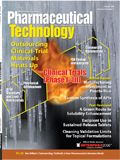Trash and Treasures
Process efficiency is measured not only by what is kept, but also by what is thrown away.
Did the lab manager own the supply company?
"In the early days of out of specifications procedures in our analytical laboratories, our site got hammered by FDA for not having appropriate controls for repeated testing," reports our GMP Agent-in-Place. "Our laboratory technicians learned that writing down the comment 'retest needed due to dirty glassware' was acceptable, so they used this comment frequently.
"During the next FDA inspection, the investigator saw this comment repeatedly used, and asked whether the laboratory glassware washer was validated. He was told that it was not.
"As a result, we agreed to validate the laboratory glassware washer! In the meantime, we were to use only new glassware for the tests.
"So the new testing process was: unpack the glassware, wash the glassware, rinse the glassware with water for injection, perform the test, and then trash the glassware."
It sounded like a good idea
"Our process starts with a gentle thawing of the raw material under controlled conditions," notes our GMP Agent-in-Place. "It's all controlled by a time–temperature profile method to maximize yields.
"Traditionally this thawing process is performed using air as the heat-transfer media. Then someone had the brilliant idea that water or some water-based medium could be used, and it would be faster and raise yields. Because the water-bath method worked in laboratory-scale testing, a one-of-a-kind, full-scale computer-controlled pharmaceutical-grade piece of equipment was ordered and received.
"Operational trials were performed using placebo. The equipment was never reliable enough, so the regulatory approval process wasn't even started. In the end, this half-million dollar, never used, bit of kit was sold as scrap."
Moldy oldie
"It all started when mold was detected during the sterility testing of the freeze-dried produce," states our alarmed GMP Agent-in-Place. "The lot was (of course) rejected and an investigation was started. Part of the investigation was to perform a media fill. The media fill resulted in a failure due to mold—the same mold.
"An extensive search for molds was conducted in and out of the fill room, and many improvements were made. However, there was no clearly identifiable source found for the mold. Another media fill was scheduled, run, and ultimately again failed, for mold.
"After a couple of weeks into the issue, all product made during this time period had been rejected and inventories were running low. It was finally observed that the small, sterile bulk container was brought into the filling suite on a cart. It was not transferred in the airlock to a dedicated sterile suite cart, but the cart was disinfected and wheeled into the fill suite.
"An inspection of the cart showed that there was cardboard under the shelf which was moldy with the same species that had been found in the product. The corrective action was to dedicate a cart to the filling suite, disinfect the exterior, and move the bulk vessel from the transport cart to the dedicated filling-suite cart. In addition, all transport carts were examined and disinfected thoroughly, and any cardboard was removed."
Pharmaceutical Technology's monthly "Agent-in-Place" column distills true-life cautionary tales from the secret files of Control, a senior compliance officer. If you have a story of clueless operators, oblivious management, inopportune lapses of judgment, or Murphy's Law in action, please send it to Control at AgentinPlace@advanstar.com We won't use any names, but if we do use your tale of disaster, courage, or just plain weirdness, Control will send you a coveted Pharmaceutical Technology t-shirt.

Pharmaceutical Tariffs Are Imminent: How Industry is Bracing for Impact
April 16th 2025On April 14, 2025, the Trump Administration launched a national security-driven investigation into pharmaceuticals, a move that will likely result in tariffs being placed on pharmaceutical drugs, ingredients, and other components that are imported from outside of the United States.